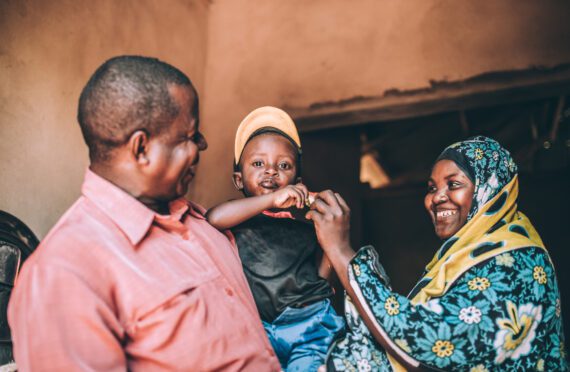Bread for the World has long emphasized that the world is facing unacceptably high levels of hunger.The number of people who need lifesaving humanitarian assistance has risen sharply over the past decade—approaching 340 million in 2023, compared with81 million in 2014.
In 2021, more than 570,000 people confronted the deadliest type of hunger emergency–famine. In 2022, there were famine conditions in five countries—the largest number in a single year since a standardized definition of famine was adopted, while tens of millions of people lived on the verge of famine.
As Bread has discussed, ending hunger will require effective climate action. Bread’s climate and hunger policy principles include the recognition that the countries where people are suffering most from climate change and have the fewest resources to respond to it are responsible for far lower emissions levels than the United States. The United States should provide increased support to enable the countries most affected to better adapt to climate impacts—for example, by contributing to the Green Climate Fund and/or the new Loss and Damage Finance Facility that was announced at COP-27 in November.
Growing numbers of people are being forced to leave their homes due to climate impacts, and the world is experiencing a steadily growing number of disasters linked to climate. The number of medium-to large-scale disasters in the past 20 years ranged from 350 to 500. This is five times as many as in the three decades before that (1970-2000). The 2022 Global Assessment Report on Disaster Risk Reduction projected that by 2030, the world will face about 560 disasters every year.
Despite record-high total donor pledges for humanitarian emergencies in 2022, the gap between donor resources and the total needed to meet the needs was also a record high, as Institute Insights explained in last month’s Hunger Hotspots feature. The reality is that the global humanitarian system did not anticipate and was not designed for climate change and its impacts.
According to a report by the International Red Cross, Emergency Watchlist 2023,”2022 has shown that the role of climate change in accelerating the global humanitarian crisis is undeniable.”
The World Food Programme’s director of climate and disaster risk reduction, Gernot Laganda, said in November 2022 that within the humanitarian aid system, food has been particularly hard hit. He argued that the system needs to shift quickly from are active to a proactive orientation to prevent a breakdown of the system.
“That runaway train [when the humanitarian aid system breaks down]will be fragility. It will be displacement. It will be starvation. And we have about a decade, I think, to build the systems
that get us ready to deal with this,” Laganda said, adding, “It’s always a failure when our trucks are rolling, when our airdrops are coming. It’s a failure to predict. It’s a failure to protect. It’s a failure to prepare.”
Combining humanitarian aid with resources for climate action is one potential avenue for improving the global community’s response to people who are facing hunger and malnutrition that is primarily or partly driven by climate change.
Just one example of this is the announcement of a new fund for climate early warning systems made by U.N. Secretary-General António Guterres during the COP-27 climate conference in November 2022.
“People in Africa, South Asia, South and Central America, and the inhabitants of small island states are 15 times more likely to die from climate disasters. These disasters displace three times more people than war. And the situation is getting worse,” Guterres said.“I have called for every person on Earth to be protected by early warning systems within five years, with the priority to support the most vulnerable first.”
The World Meteorological Organization (WMO)released a plan to achieve this, the Executive Action Plan of Early Warnings for All, also during COP-27. An initial investment of about $3.1 billion, or less than 50 cents per person per year, would enable early warning systems to be put in place worldwide by 2027.
“Early warnings save lives and provide vast economic benefits. Just 24 hours’ notice of an impending hazardous event can cut ensuing damage by 30 percent,” said Petteri Taalas, secretary-general of WMO.
In 2023, Bread will continue to highlight the unprecedented global hunger crisis, encouraging strong humanitarian assistance efforts that will enable communities to begin to recover and rebuild.
Michele Learner is managing editor, policy analysis, with Bread for the World.



